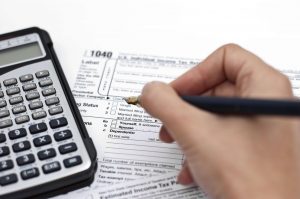8 ways to calculate depreciation in Excel

There may be a little nuisance as scrap value may assume the good is not being sold but instead being converted to a raw material. For example, a company may decide it wants to just scrap a company fleet vehicle for $1,000. This $1,000 may also be considered the salvage value, though scrap value is slightly more descriptive of how the company may dispose of the asset.
- Some methods make the item lose more value at the start (accelerated methods), like declining balance, double-declining balance, and sum-of-the-years-digits.
- Companies have several options for depreciating the value of assets over time, in accordance with GAAP.
- The four depreciation methods include straight-line, declining balance, sum-of-the-years’ digits, and units of production.
- The percentage of cost method multiplies the original cost by the salvage value percentage.
- Once you know the salvage value, you may go ahead to calculate depreciation.
- You want your accounting records to reflect the true status of your business’s finances, so don’t wait until tax season to start thinking about depreciation.
- Some companies might say an item is worth nothing (zero dollars) after it’s all worn out because they don’t think they can get much.
Once you know the salvage value, you may go ahead to calculate depreciation. Companies can also get an appraisal of the asset by reaching out to an independent, third-party appraiser. This method involves obtaining an independent report of the asset’s value at the end of its useful life. This may also be done by using industry-specific data to estimate the asset’s value. Other commonly used names for salvage value are “disposal value,” “residual value,” and “scrap value.” Net salvage value is salvage value minus any removal costs. By the end of the PP&E’s useful life, the ending balance should be equal to our $200k assumption – which our PP&E schedule below confirms.
Depreciation and After-Tax Salvage Value Assumptions
When businesses buy fixed assets — machinery, cars, or other equipment that lasts more than one year — you need to consider its salvage value, also called its residual value. With a large number of manufacturing businesses salvage value formula relying on their machinery for sustained productivity, it is imperative to keep assessing the equipment they own. Constant use and other factors like the nature and quality of these assets cause a continual deterioration.
In 1998, the company restated its earnings by $1.7 billion – the largest restatement in history. Therefore, the salvage value of the machinery after its effective life of usage is Nil. Therefore, the salvage value of the machinery after its effective life of usage is INR 350,000. Therefore, the salvage value of the machinery after its effective life of usage is INR 30,000. When you’re using straight-line depreciation, you can set up a recurring journal entry in your accounting software so you don’t have to go in and manually prepare one every time.
What Are the Different Ways to Calculate Depreciation?
When calculating depreciation, an asset’s salvage value is subtracted from its initial cost to determine total depreciation over the asset’s useful life. From there, accountants have several options to calculate each year’s depreciation. Salvage value actually tries to capture the remaining scrap of a particular machine, after its useful life of usage. Most of the time Companies buys new machinery after completion of the effective life of usage and sells the old machine on the basis of its scrap value. Again, the depreciation which was provided during the effective life of the machinery (in terms of money) actually revolves within the working capital of the company.
In the depreciation schedule above, the refrigerator’s ending book value in year seven is $1,000, the same as the salvage value. Say you own a chocolate business that bought an industrial refrigerator to store all of your sweet treats. You paid $10,000 for https://www.bookstime.com/ the fridge, $1,000 in sales tax, and $500 for installation. Once you’ve determined the asset’s salvage value, you’re ready to calculate depreciation. Say you’ve estimated your 2020 Hyundai Elantra to have a five-year useful life, the standard for cars.
How to Calculate Salvage Value?
Other times, it’s about figuring out how much it’s worth when it’s done for good, minus the cost of getting rid of it. Salvage value might only focus on its worth when it’s done, without considering selling costs. Both declining balance and DDB methods need the company to set an initial salvage value. Another example of how salvage value is used when considering depreciation is when a company goes up for sale.

